From the olive wreath given to the winners of the ancient Olympic Games, to the olive tree of Athena and Plato, this sacred evergreen tree has been celebrated since the antiquity. Today, one of the oldest olive trees in the world (around 3,000 years old) stands in a small village on Crete. From the olive wreath given to the winners of the ancient Olympic Games, to the olive tree of Athena and Plato, this sacred and eternal tree has been celebrated since antiquity. Today, one of the oldest olive trees in the world (around 3,000 years old) stands in a small village in Crete.
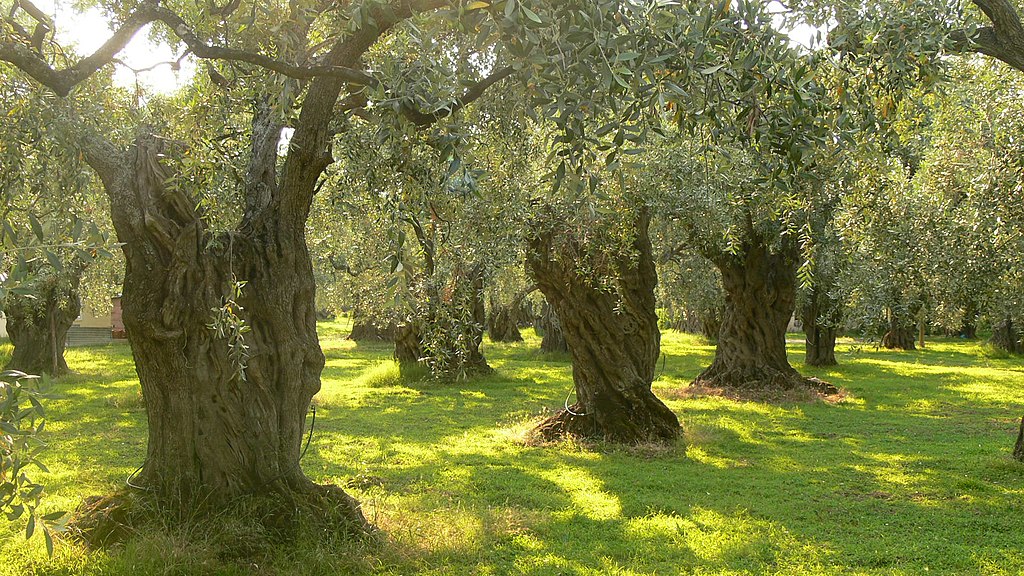
The olive tree, between history and myth
The olive tree had a symbolic value for various nations as well as for the ancient Greeks. In times of war, messengers bearing a request for truce held up an olive branch as a symbol of peace, while iketes, citizens who had committed an offence and sought asylum at the altar of a god, also carried an olive branch.
Originating in Asia Minor, the geographic spread of the olive tree is linked to the establishment of the Mediterranean climate across southern Europe and northern Africa, given that it requires a particular climate to grow.
Since the antiquity, it has played a central role in the great civilizations of the world: the Egyptians, Minoans, Phoenicians, Greeks and Romans all developed or perfected the cultivation of olive trees. In ancient Greece, the olive tree was sacred: the goddess Athena herself was said to have offered the first olive tree to the city of Athens, as a symbol of wisdom and prosperity.
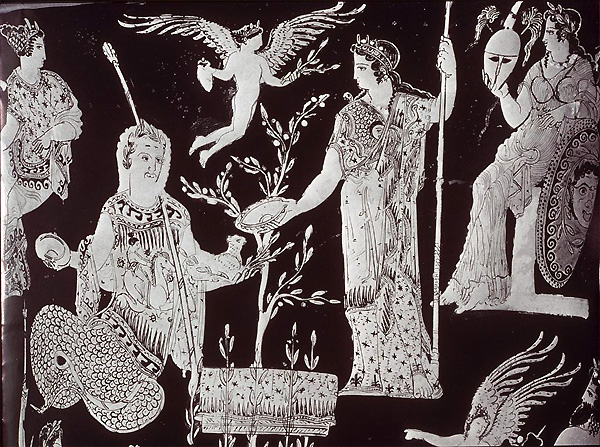
According to archaeologists, the domestication of the olive tree took place between 3800 and 3200 BC, over five millennia ago. Archaeobiological studies and the genetic study of oleaster (wild olive) populations and olive varieties show that domestication occurred independently in several regions of the Mediterranean basin, and most probably over a lengthy period.
Archaeological research shows that oil was already being extracted as early as the 4th millennium BC in Lebanon and Cyprus, and in Crete around 3500 BC.
In the Minoan palaces of Crete, oil was stored in large quantities in jars called pithoi, and in the Mycenaean palaces of mainland Greece, numerous oil jars and tablets written in Linear B have been found, mentioning the ideogram for oil.

A precious tree from ancient times to the present
According to tradition, Plato, one of the greatest philosophers of ancient Greece, taught to his students under the shade of an olive tree in the grove of Academus, which lied on the outskirts of Athens and lent its name to the Academy – the very first philosophical school in history.
This olive tree was more than just a tree: it was a symbol of wisdom, peace and continuity. In Greek culture, the olive tree was already sacred, linked to the goddess Athena, protector of the city. Plato’s choice of this tree as a place of learning was not without meaning: it represented a link between nature, knowledge and philosophy.
For centuries, this olive tree was venerated as a living witness to Athens’ intellectual past. It survived until 1976, when it was unfortunately damaged in a road accident. But a regrowth of the tree has now been replanted in the Academy’s garden, as a tribute to the city’s philosophical and natural heritage.
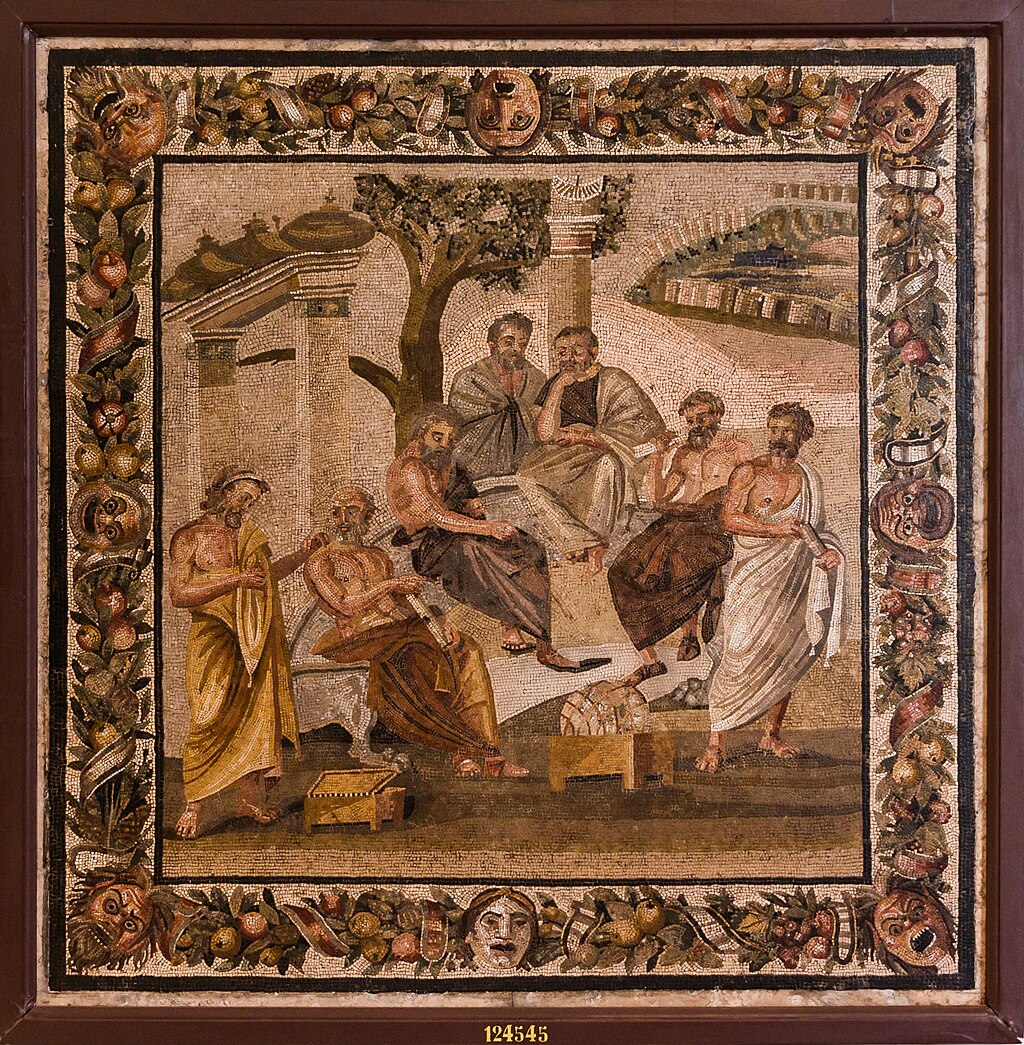
Hippocrates (c. 460-377 BC), considered the father of medicine, recognized the many therapeutic properties of olive oil, when consumed but also when used externally as an ointment. In his writings, he recommended it for more than 60 medicinal uses, including healing wounds, soothing muscular pains, calming skin irritations and acting as a mild laxative.
The discovery of petrified olive leaves on Santorini, as well as archaeological finds at the Minoan palaces of Crete, reveal the role of olive oil in the Cycladic and Minoan civilization and illustrate the long-lasting role of this “blessed fruit” in the land of Greece. Today, the olive tree is grown on every continent, but remains deeply linked to the Mediterranean identity.
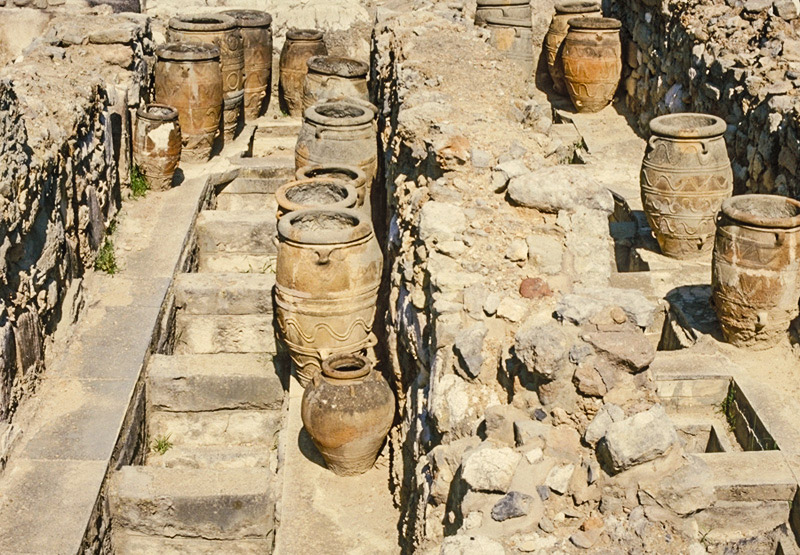
The Olive Tree of Vouves: a living monument in Crete
Located in the region of Chania in Crete, the Olive Tree of Vouves is considered one of the oldest surviving olive trees in the world. Its exact age is difficult to determine, but estimates range from 2,000 to over 3,000 years old, or even more according to some sources.
What makes this tree so impressive is its massive, twisted trunk, which resembles a natural sculpture. Despite its age, the tree is alive and still producing olives today. In 1997, the tree was declared a protected natural monument.
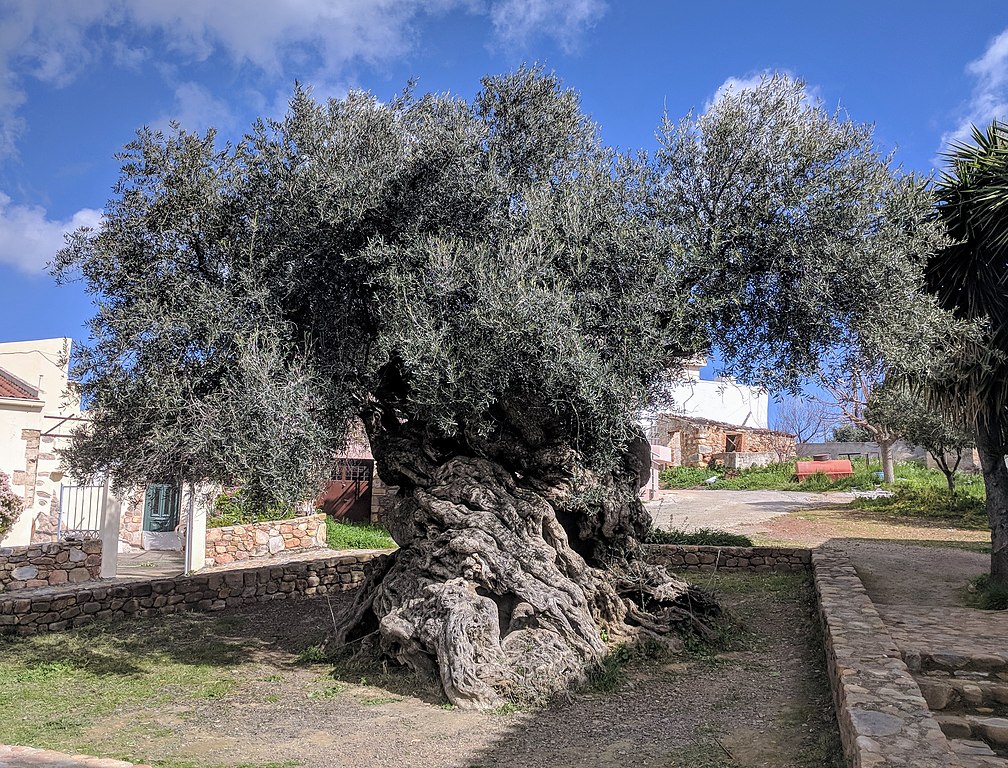
Next to the tree, in a house dating back to the 19th century, is the Olive Tree Museum of Vouves, where visitors can learn more about the history of the olive tree, the cultivation of olive oil in Crete, and the importance of this tree in Mediterranean civilization.
Exhibits trace the cycle of olive oil cultivation, harvesting, production, transport and storage, from ancient times to the mid-1950s.
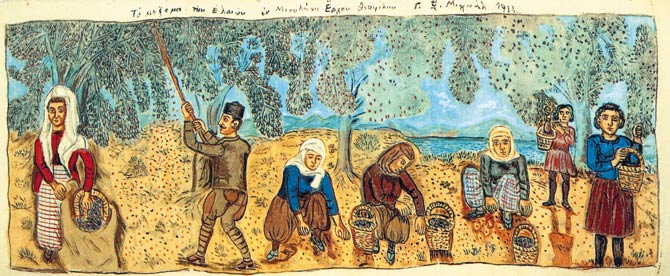
Translated from the original article which appeared on Grèce Hebdo
Read also via Greek News Agenda: Greek olive oil through time: tradition, innovation, and future prospects; Greek olive oil: the history and the future of a multifaceted product












